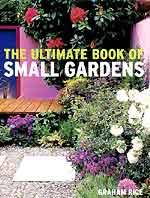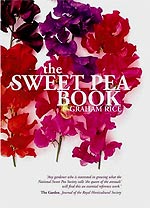Too much gardening in the wild (Extended version)
See the edited version in The Plantsman magazine here
There's an increasing trend, both in Britain and more especially in the United States, to grow more native plants both in gardens and more extensive environments. There are number of reasons for this growing enthusiasm.
In continuing to turn away from formal styles of gardening epitomised by municipal bedding schemes and traditional herbaceous borders, gardeners are embracing more informal and naturalistic approaches to planting. Alpine gardening has followed this path for some time, as characterised long ago by Reginald Farrer's enthusiasm for artificial moraines replicating natural mountain features and planted with the appropriate plants. More recently, woodland gardening and also prairie and meadow plantings, on both a large scale and small, have increased in popularity and native plants can be ideal components.
At the same time as we turn away from formal styles some - though clearly not all - gardeners are also rejecting large flowers and bold colour in favour of quieter colouring and a softer look. Native plants often fit here too.
On a larger scale, outside gardens, the aims of the post war Road Beautification Association which promoted the planting of 'Kanzan' cherries and other ornamental trees along roadsides, especially in the post war years, were re-invented in the 1960s by the movement to integrate roadsides and motorway embankments into the natural landscape, establishing ĺ─˙naturalĺ─¨ wildflower communities by sowing wild flower seeds and dramatically reducing mowing. Habitat restoration projects are becoming more widespread with The Woodland Trust, for example, planting new deciduous woodlands.
There is also a feeling, especially in North America, that native plants grow better than plants from elsewhere in the world in gardens in the general area where they are native, coping more resiliently with local soil and climatic features. Increasingly, and in contradiction, there is also the fear that non-native plants are likely to escape from gardens, establish themselves in the wild and then compete too effectively with the native flora. The wider wildlife value of native plants in providing habitat and food is also an influential factor.
Some of these factors that drive the increasing popularity of native plants are purely matters of taste and fashion, others are less subjective. But, as they say, there is an elephant in the room: There is no universal agreement on the definition of a native plant. This is evident in both the botanical and horticultural spheres.
In the botanical world
In the botanical world there is a tendency to relate this issue to the influence of man. So on its website the Royal Botanic Gardens, Kew, defines plants as native if they ĺ─˙would have been found growing in the United Kingdom if humans had never been hereĺ─¨ - which is a bit like the joke about someone asking for directions… the response being ĺ─˙if I were you I wouldn't start from hereĺ─¨. The Botanical Society of the British Isles uses a more specific, and more helpful definition: ĺ─˙A native species is one which arrived in the study area without intervention by man, whether intentional or unintentional, having come from an area in which it is native…ĺ─¨ A useful discussion of this issue is to be found in the New Atlas of the British and Irish Flora.
In North America the Federal Native Plant Conservation Committee, follows the same line and agreed in 1994 that a native plant is one "that occurs naturally in a particular region, state, ecosystem, and habitat without direct or indirect human actionsĺ─¨ and a simplified version has been taken up by the United States Department of Agriculture, a surprisingly valuable and comprehensive botanical resource. However, this is curiously at odds with another often seen definition, quoted in the recently published Native Plants for American Gardens by Allan Armitage, that a plant is native if it was present prior to contact with Europeans. As if activity by native Americans doesn't really count.
The big issue here is how to view recent and current extensions of range. The case of the yellow tree lupin (Lupinus arboreus) in California and Oregon is a classic one. To quote the California Invasive Plant Council this plant is ĺ─˙Native from the San Francisco bay area south. Considered invasive further north.ĺ─¨ So in a short distance the status of this plant changes from being considered native and so the focus of conservation efforts to invasive (like Japanese knotweed) - and torn out. It is generally spreading north, sometimes having been planted to stabilise dunes, now appearing in Oregon.
In Britain we have a more relaxed attitude, treat new arrivals in our flora and extensions of range with enthusiastic curiosity. We also have the benefit of hundreds of years of detailed field botany providing a vast body of information on the distribution of plants, both native and introduced. The BSBI has been diligently publishing records of new arrivals in our flora for many years. North America is far less extensively botanised
The reason that the tree lupin is spreading northwards is at least partly climate change; it is moving into areas which now have a climate similar to what has been considered its native range. Climate change is clearly the result of ĺ─˙direct or indirect human actionsĺ─¨ but if plants which spread as a result and (and are removed) then die out where they were originally native because the climate is changing… Well, we have a problem.
In the horticultural world
In a more horticultural context there is far less harmony of view, indeed there is what I might call a willing suspension of disbelief - a wish to believe that a plant is native, even when it is clearly not. Two experiences highlight this inclination.
Ox-eye daisy (Leucanthemum vulgare) is an attractive and colourful constituent of seed mixtures used to sow roadsides. In the 1970s and 1980s it was noticed that the plants flowering in some projects were of a French variant with larger flowers. What is the point, I wondered, of planting supposedly native plants which are not actually native at all? In a more extreme example, in a planting developed at the Garden Festival of Wales in 1992 to demonstrate the creation of a wild flower meadow, I saw Shasta daisies (Leucanthemum x superbum) used instead of native ox-eye daisies (along with a number of other clearly non native plants).
So the species L. vulgare is native to Britain, but does that mean that any form, any ecotype is appropriate for planting as if native anywhere in the native range of the species? This very variable species grows in most of Europe and some taxonomists break it up into a number of regional or local species or subspecies, many from the rather different climate of southern Europe; Flora Europea presents the main variants as fourteen species. So clearly, in this case, only the local form is truly native.
This problem was found in many plants as the demand fed by early enthusiasm for sowing wildflowers outstripped supply. The problem has declined significantly since the 1980s but Flora Locale, who campaign for the use of local stocks of wildflowers, cite the fact that many alders planted in recent years originate from seed collected in Hungary where the native form has larger leaves, catkins and seed cones. Neither this nor Spanish ox-eye daisies are native British plants.
This more sophisticated understanding of the variability of plants listed as native not only inspired the creation of Flora locale but initiatives such as the work of the late Miriam Lane (Rothschild) who raised crops of wild flowers in Northamptonshire from local stock. This moved a step further with the harvesting and sale of seed from specific named natural meadows, including North Meadow National Nature Reserve in Wiltshire. Even so, much of the 20-30 tonnes of wild flower seed of native origin used each year comes from a relatively small genetic pool which may be further restricted by vegetative propagation.
In North America enthusiasm for native plants is more widespread and more fervent, partly fuelled by a heightened antagonism to invasive non-native plants and also by the view that we should not diverge from God's plan of putting native plants on this earth in specific areas by planting non-natives in their place. Flagging plants as native (sometimes only at the genus level) is familiar in catalogues and on plant labels as part of the marketing effort.
The second occasion when the problem of defining what is native was highlighted occurred on a visit to the native plant sale at a large, lavishly funded environmental education centre in Pennsylvania. There I found on sale, listed as native, amongst many other surprises, these plants:
Filipendula 'Kahome' - F. rubra is native in scattered locations in Pennsylvania, 'Kahome' is probably a hybrid between two Japanese species.
Heliopsis helianthoides 'Sommersonne' - this is a German cultivar of var. scabra the nearest native population of which is about 700 miles away, although var. helianthoides is locally native. Plants sold as 'Sommersonne' may have single, semi-double or double flowers.
Phlox paniculata 'David' - the species is locally native, this white form was selected for mildew-resistance at public native plant garden.
Sambucus nigra 'Madonna - a variegated form of a non-native species; other Sambucus species are native.
Is this driven by ignorance, sloppiness, or the inclination to sell more plants? Either way it is not restricted to local plant sales, one of the largest mail order suppliers in the US cites Heuchera 'Caramel' (raised in France, with blood from at least three different species from opposite coats of the United States) as native. Here the overpowering imperative of marketing rules.
The New England Wildflower Society takes a more responsible attitude. It makes it clear that the seed distributed through its annual seed list is collected from the Society's garden or grown under contract and specifically makes it clear that the seeds ĺ─˙are intended for garden use, not for the reintroduction of native plants to the wild.ĺ─¨ The society also selects, names and distributes forms of local natives, like 'Stairway to Heaven', the superb variegated form of Polemonium reptans which arose at their garden. William Cullina, the Nursery Director of the Society, who discovered the plant, rather pointedly states: ĺ─˙a variegated plant is certainly not a ĺ─˙wildĺ─¨ flower.ĺ─¨
In Britain this is all less of an issue as there is less fervour about the inherent superiority of native planting in gardens and there are few people who would consider, say, Sambucus nigra 'Madonna' or a double sterile celandine such as Ranunculus ficaria 'Collarette' to be British natives even though the species themselves are native
But until there is clarity on this issue, can we just check that species we plant as natives really are native to our area? And if we grow their cultivars, let's just treat them as the cultivated varieties they are. And can we just leave those lupins to follow the climate they need?
What's native in your area?
In Britain, at the Postcode Plants Database
In the United States, at the Department of Agriculture plants website
Other resources
In Britain
Botanical Society of the British Isles
Flora locale
New Atlas of the British and Irish Flora
Woodland Trust
In the United States
Federal Native Plant Conservation Committee
New England Wildflower Society
Native Plants for North American Gardens by Allan Armitage
California Invasive Plant Council
American Beauties





